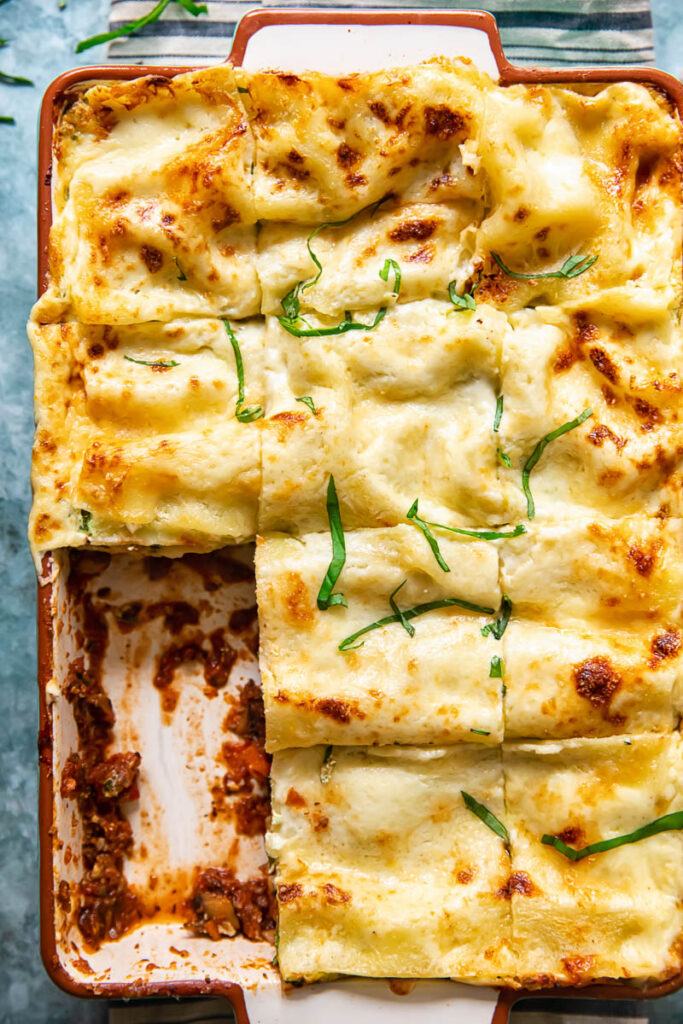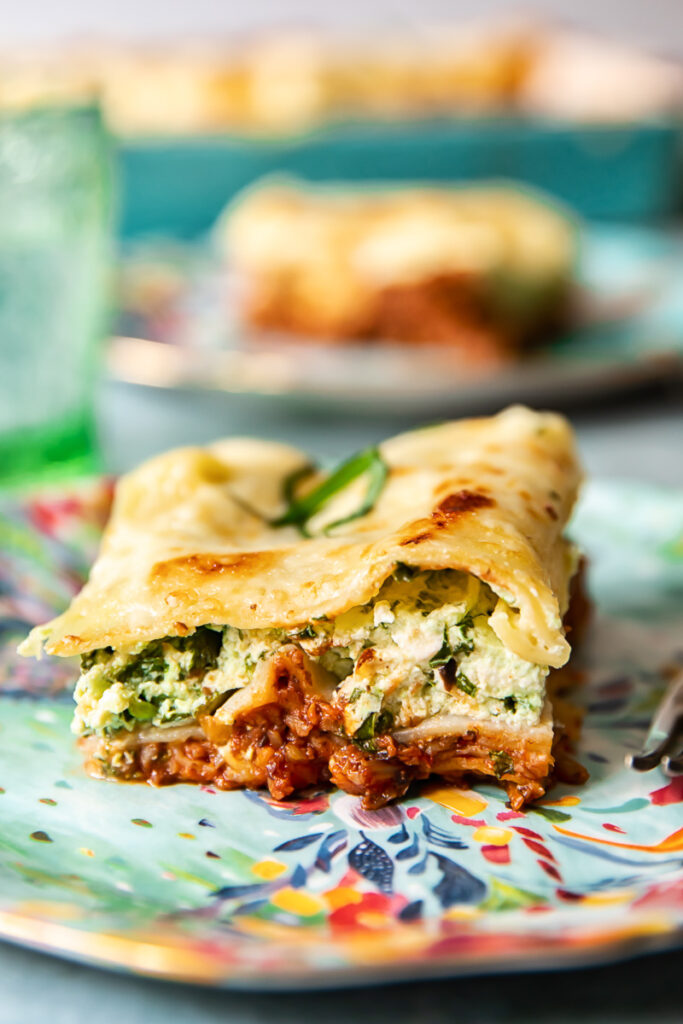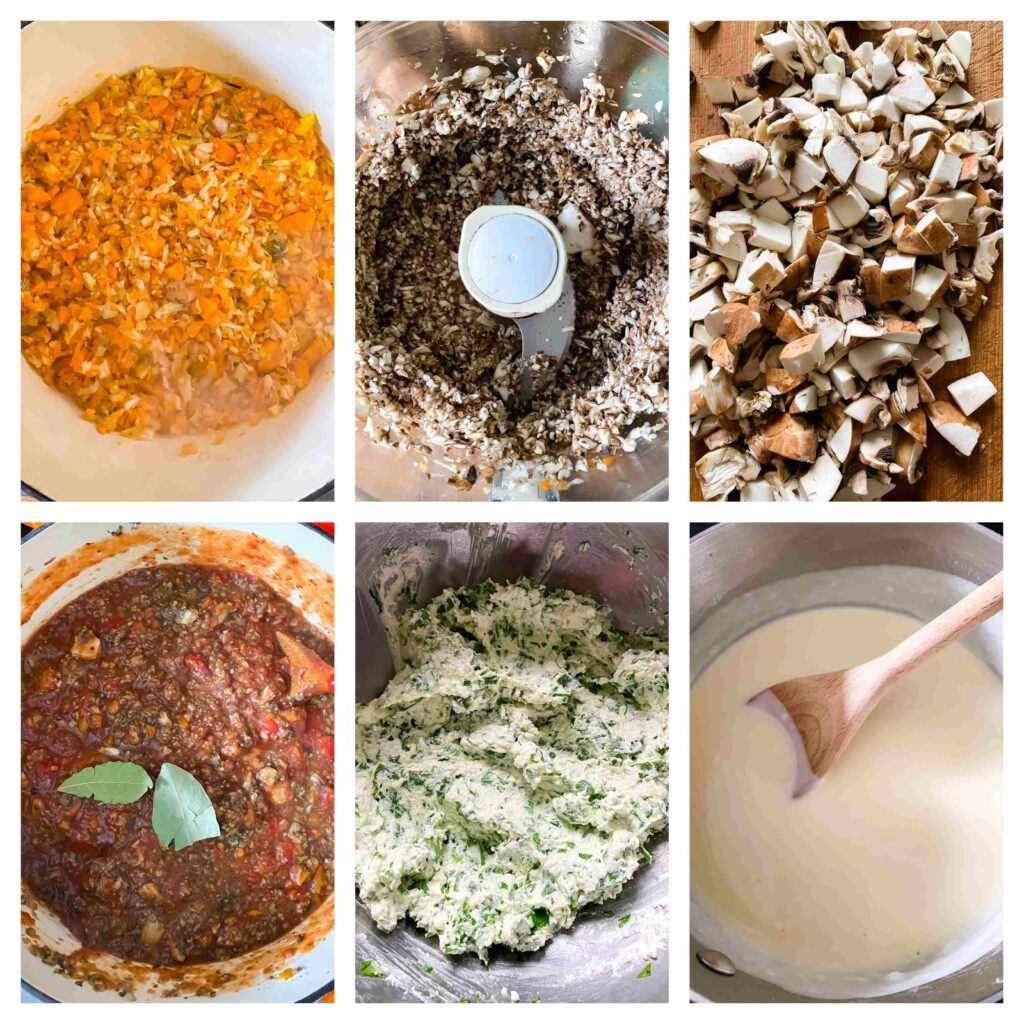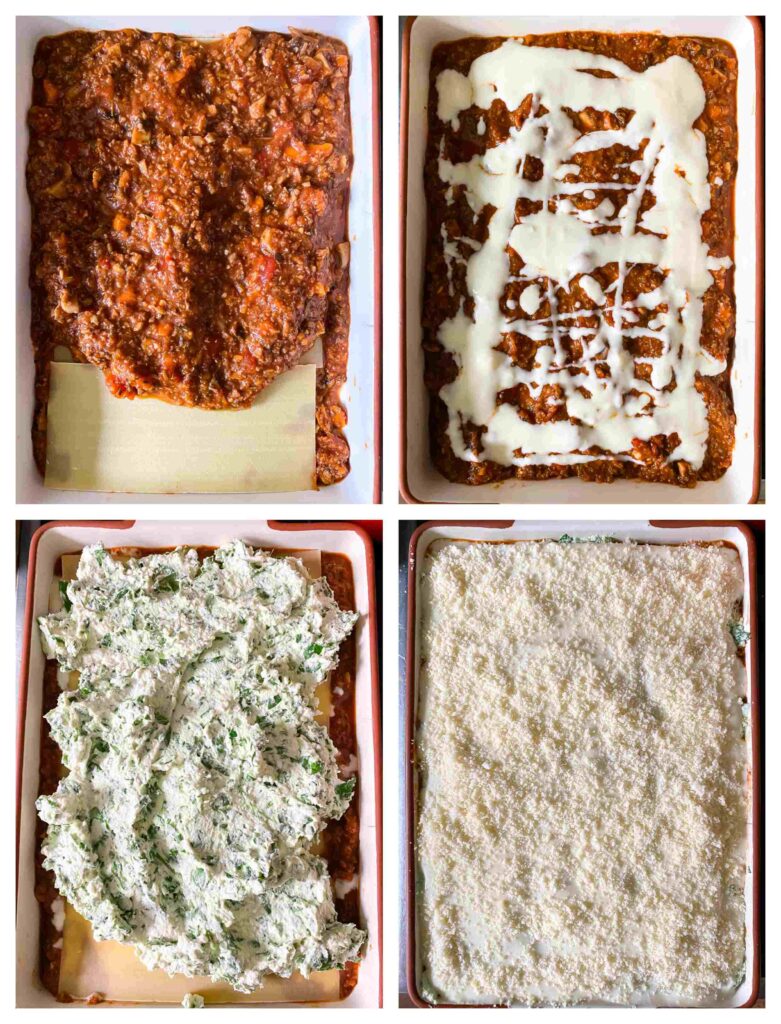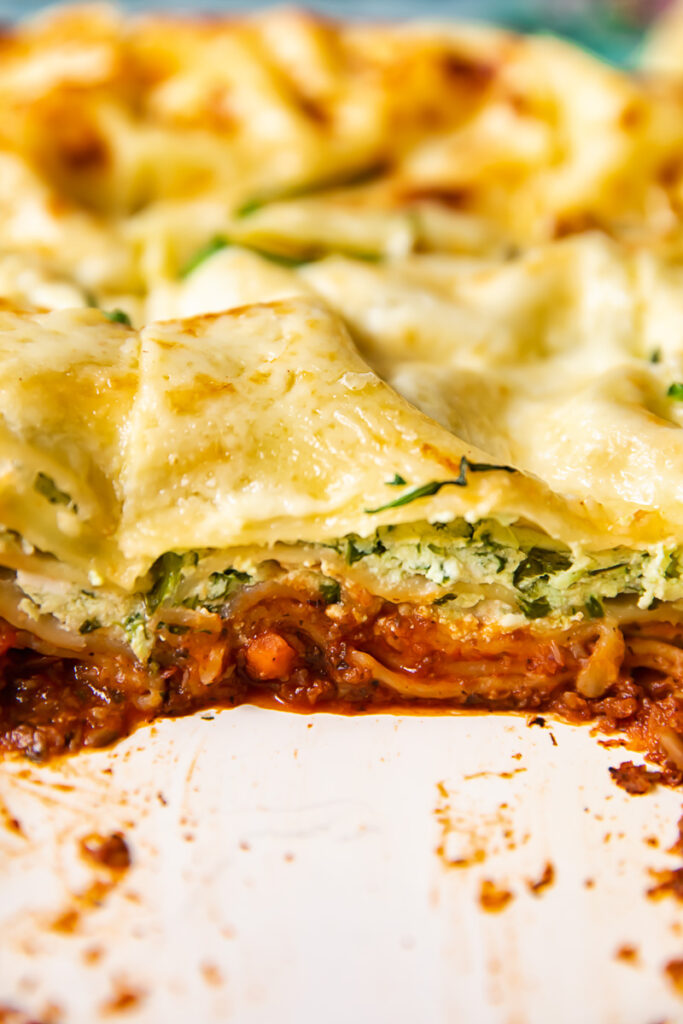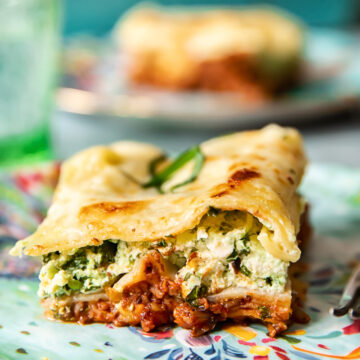The ragu used in this lasagna can be used in a whole range of ways. Check out my mushroom bolognese to see another way I used it! No meal goes down better in my house than a lasagna. It is our go-to comfort food, and no matter how often I make it, it just doesn’t get old! One of the reasons lasagna is so loved is because it is possible to remain faithful to the basic idea while playing around with ingredients. Recipes like this remain fresh because they are constantly being reinterpreted with all sorts of creative ideas. I’ve created plenty of other lasagna recipes, including White Chicken Lasagna, Three Cheese Eggplant Lasagna and Seafood Lasagna. I even made a White Chicken Skillet Lasagna! All are incredibly tasty and go down very well every time they are served. While I love getting experimental in the kitchen, sometimes only the classic version will scratch the itch. So for this vegetarian lasagna I’ve been inspired by the version I grew up with. For me, there is no food more comforting!
Vegetable lasagna
For this version, I wanted a vegetable lasagna that reminded me of of the way my mum makes it. But I also knew that I wanted a base made of mushrooms to make the most of their nutty taste and satisfying texture. Mushrooms combine perfectly with carrots, celery, onion and tomato to create a fantastic ragu. A good ragu is a useful for all sorts of recipes, so not a bad idea to make extra for spaghetti bolognese or a pasta bake! The best lasagna has a generous layer of creamy cheese. To keep this layer interesting, I’ve added a hearty amount of chopped basil. The basil brings a lovely fresh layer to the lasagna and cuts through the creamy ricotta mixture. And of course no classic lasagna is complete without a hearty dollop of béchamel. I’m a sucker for béchamel, so this is a recipe I come back to often.
How to layer lasagna
All of the components come together with layers of lasagna pasta, which is really no different from the meat version. I know that some people swear by fresh pasta, but I find that the dried version comes out best and is easier to keep from becoming soggy and unappetising. I also don’t find it necessary to boil lasagna noodles. Once the different components have been made, it’s the easiest thing in the world to layer a vegetable lasagna. It’s best to keep the thickness of the layers fairly consistent so the flavours are evenly spread, but no need to be too careful. Always start with a ragu on the bottom, with a layer of pasta on top. Add more ragu and spoon béchamel on top, then more pasta. Now place the spinach ricotta layer and another layer of pasta. Add one more layer of ragu before topping with the rest of the béchamel sauce and a grated hard cheese of your choice. I like mine with lots of cheese! The lasagna noodles should be placed between each layer, covering almost everything without being too anxious about gaps at the sides. You may need to break some of the pasta sheets to make them fit. The number of layers will depend on the depth of your lasagna pan.
Serving suggestions
Italians traditionally start their meals with an antipasti course, and I can’t see any reason why we wouldn’t want to follow their good example. My recommendations are to make simple but delicious crostini or bruschetta or put together an Italian charcuterie platter. A hearty lasagna goes well with a lovely fresh salad to balance it all of. A Tuscan panzanella salad or isalata caprese would be my choices! I also like adding a few pieces of garlic bread, perfect for soaking up any remaining red sauce! And why not round things off with a salted caramel affogato or amaretti tiramisu?
Storage and leftovers
Vegetable lasagna may just be the perfect make-ahead meal. I sometimes make the sauce several days in advance since it takes a couple of hours to simmer. It will store in a fridge or freezer for assembly later, letting me bake the lasagna whenever I am ready. Any remaining sauce can be eaten with spaghetti or any other pasta for an easy meal. Leftover lasagna can be stored for 5 days in the fridge. Cover it in plastic wrap or keep in an airtight container. It’ll warm in a microwave or oven set to 180C/350F. If heating in an oven, cover with aluminum foil to prevent it from drying out. Baked lasagna can also be frozen for up to a month. Keep frozen lasagna in the baking dish and let it come to room temperature before returning to the oven.
More vegetarian pasta recipes
Pasta Cream Sauce Vegetarian Mushroom Carbonara 5 Minute Ravioli Sauce Goat Cheese Pasta with Spinach and Pine Nuts
